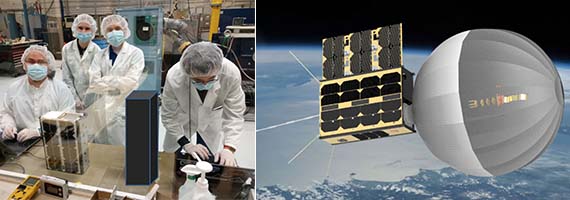
CatSat Space Mission
CatSat is a spacecraft designed by students at the University of Arizona.
The spacecraft has been built to do 3 tasks:
• Pave the way for future small scale satellites to begin venturing into deep space through the use of cutting edge inflatable antenna technology
• To perform research about the earths ionosphere. which has never been done before.
• Educate the next generation of scientists and engineers in a real world environment.
CatSat Passes Vibration Testing!
As of Thursday November 10th, the CatSat spacecraft is fully qualified to go to space! A major milestone for a student led project.
Students at all educational levels have been working around the clock to make this mission a success, and now they have a fully functional and tested satellite waiting to go to orbit.
The final test was a vibration test, that simulated the forces experienced when the rocket is going to space. This was done by bolting the spacecraft to a plate that is shook violently in every direction to ensure it is durable enough for the
violent ride to space. This is a hard test and many spacecraft fail, but CatSat passed in its first attempt. Launch is being scheduled for sometime in mid-to-late January.
NEWS FLASH! Based on the team's terahertz and CatSat work, NASA Goddard has asked them to participate in developing an instrument to sniff out water on the Moon, first with an instrument deployed on the surface and potentially from orbit using a lunar version of CatSat. The same group of students will be involved. Congratulations Team!

For Public
Public events include our Monday Night Lecture Series, world-reknowned Astronomy Camp and Mt Lemmon Sky Center.

For Students
A good place to start if you want to become an undergrad major or grad student, or need to find our schedule of classes.

For Scientists
Find telescopes and instruments, telescope time applications, staff and mountain contacts, and faculty and staff scientific interests.




